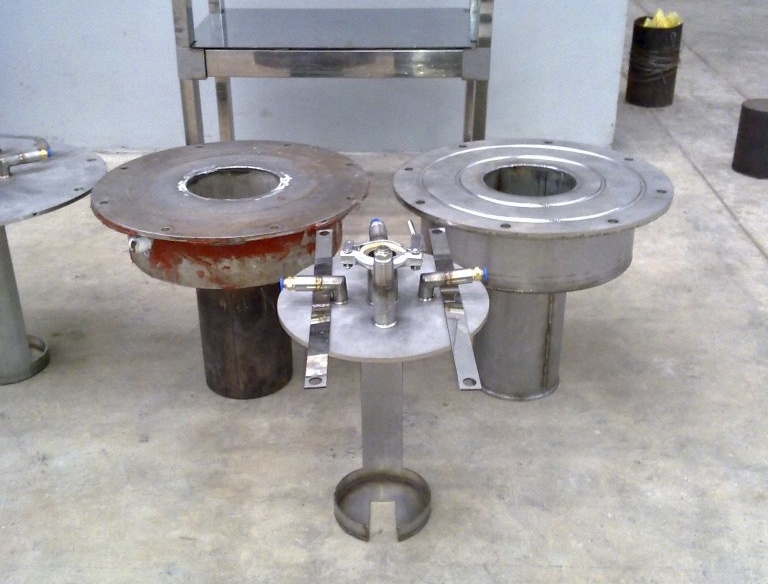There has been a lot of positive news coming out of Burma in the last six months. Despite naysayers, there have been many positive steps taken with regards to human rights, the release of political prisoners, trade and normalisation of international relations. Some will want to point to exceptions but the pace of change is refreshing after years of military rule and repression.
One welcome news item is the statement by Thein Sein that he plans to sign the International Atomic Energy Agency (IAEA) Additional Protocol. This has been a long awaited development, one that might start to shed light on claims of a hidden nuclear program in Burma, with possible nuclear weapons as a goal. The world community needs to recognise that signing the Additional Protocol is but a first step on a possible long road to resolution.
Burma adheres to a very dated form of the Safeguards Inspection Agreement with the IAEA. This old agreement limits the IAEA powers to look into any activity that Burma has not declared to the agency. Burma compounded the difficulty by executing another agreement, called a Small Quantities Protocol (SQP). The SQP is a joint agreement whereby Burma and the IAEA have agreed that there are no significant quantities of nuclear material at all in Burma and many portions of the international safeguards agreement are suspended. This explains why there has never been a safeguards inspection in Burma: because both sides have agreed that there is nothing to inspect.
These kinds of agreements are obsolete, obviously inadequate and have been voluntarily upgraded by most countries in the world. Countries are not obliged to update their old voluntary agreements, but Burma is one of the few significant remaining holdouts. If Burma signs the Additional Protocol the country will have to make new declarations and adopt a much more transparent and cooperative arrangement with the IAEA. This is a very positive development and on par with the improvements in human rights.
However, the world must also accept that signing the Additional Protocol is only a first step of a process that can take years. The legislature of Burma must review the agreement and ratify it. The IAEA must accept it and begin to negotiate and implement subsidiary arrangements. Most importantly, government officials in Burma must undertake a search of the country to discover all nuclear materials in civil activities. There could even possibly be some nuclear materials in the alleged hidden program that may or may not exist.
This search and declaration process can take years. ASEAN neighbor, the Philippines, signed an Additional Protocol in 1997 and did not bring it into force until 2010, over 12 years later. No one is accusing the Philippines of any wrongdoing, but it indicates how long the process can take if there is no urgency. Malaysia and Thailand signed in 2005 and still have not brought the Protocol into force. Signing is not enough.
[pullquote]“The world must also accept that signing the Additional Protocol is only a first step”[/pullquote]
Other ASEAN neighbors, Indonesia (one day!), Singapore (three years) and Vietnam (five years), moved more swiftly to sign and bring the agreement into force, but it should be clear why Thein Sein’s pledge is only the beginning. A good move towards regional cooperation would be for ASEAN to appoint experts from Indonesia, Singapore and Vietnam to advise and assist Burma on how to proceed. They might also provide some help to Malaysia and Thailand to show that Burma is not being singled out. Experts with a track record of success could provide their neighbors with guidance and tools to speed up the process.
There is one other concern about the good news in Burma. The country has been asked several times in the last two years if it has any nuclear programme. They have said no – most recently in June 2012 when the country’s Commander-in-Chief Hla Min said Burma had abandoned its nuclear programme and there was no point in having the IAEA visit because there was nothing to see. That sort of attitude is not helpful nor is it consistent with what Burma is trying to achieve.
But it is possible that after signing, ratifying and making declarations, Burma will tell the IAEA there is no reason to visit or inspect because there is nothing to inspect. Many states actually do declare to the IAEA that they have nothing, but in the case of Burma there are some pretty strong suspicions and the agency will want to investigate.
The best option for Burma today is to sign the Additional Protocol and immediately say to the IAEA that it wants to behave as if the agreement was already in force. The government should then offer to take the IAEA to any site that the agency wishes to visit and make any measurements consistent with the signed agreement even before it is ratified.
If there is something that Burma might have been concealing this is the best possible time to deal with it. A number of states have divulged old activities that should have been reported and none have been punished – most have been rewarded. Burma should follow through with the signature pledge and immediately cooperate. That would be far more convincing than taking years to implement the necessary steps as a result of the country’s bureaucratic process.
-Robert Kelley is a former director at the International Atomic Energy Agency (IAEA)



